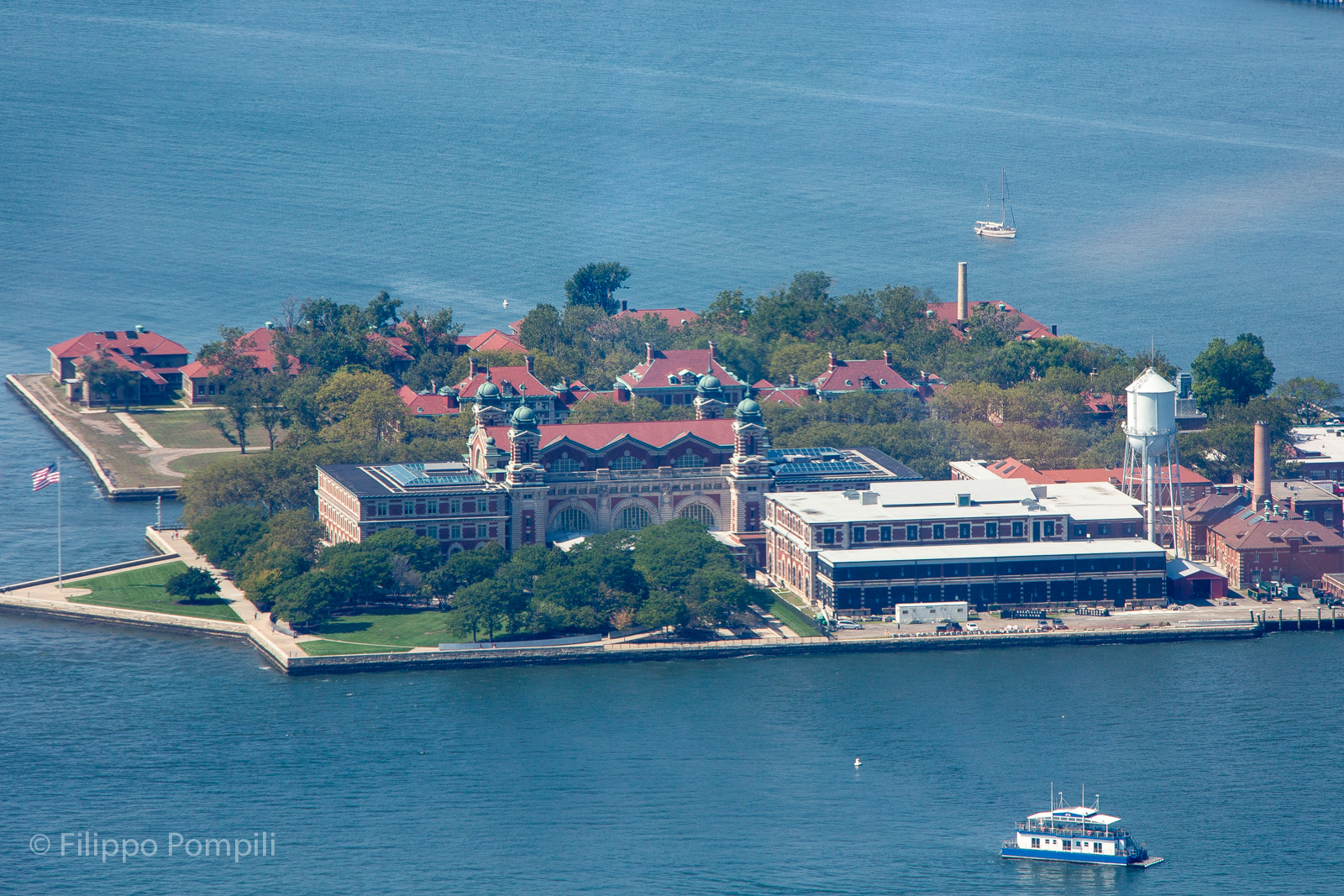Ellis Island
Ellis Island, New York Harbor, NY 10004
Web
www.nps.gov/elis/
www.libertyellisfoundation.org
Contacts
+1 (212) 363-3200
Opening hours
9:00am-5:00pm; 9:00am-3.30pm (first and last ferry)
Accessibility
wheelchair-accessible.
Subway
1 (South Ferry);
4, 5 (Bowling Green);
R, W (Whitehall St.)

Located in the northern part of New York Bay near the coast of New Jersey, the island was called by the Kioshk or Gull Island Indians, from the name of the birds that lived there. On July 12, 1630 it was purchased by the Dutch who called it Little Oyster Island, for the many oysters found on the beach and during the 1700s it was renamed Gibbet Island for the executions that were performed on the island. In 1785 it was bought by Samuel Ellis and in 1794 a military outpost was built on a small stretch of land owned by the State of New York. On June 8, 1808, the island was entirely sold to state authorities and about eighty years later, its initial function was changed when, following a law of Congress (1882, and then amended in 1891) prohibiting prisoners, the mentally ill and the poor from entering the United States, it was designated as a reception center for immigrants (April 11, 1890). The station was opened on January 1, 1892.
In 1897 a fire seriously damaged the buildings and a new facility capable of accommodating 500,000 immigrants a year was opened on December 17, 1900. Later, the increase in migratory flows, which also exceeded one million units per year, forced the government to increase the surface area of the island with a work of filling with landfill that brought its area from 1.2 to 11 hectares and allowed the construction of a new wing.
People arriving in the country were subject to a customs inspection and a medical examination and the percentage of those sent back home was very low, about two percent, mainly suffering from tuberculosis, anarchists and wanted. About three thousand cases of suicide were recorded and twelve million people were able to pass the checks. In 1924, following the reduction of the large flow of immigration, the island was used mainly as a detention center for illegal immigrants. This reduction and the progressive abandonment of the ship as a means of transport in ocean crossings led, on 29 November 1954, to the definitive closure of the island as an immigration center. Of the many people who passed through, some became famous, actor and singer Bob Hope (1903-2003), actor Rodolfo Valentino (1895-1926), physicist Albert Einstein (1879-1955), writer Isaac Asimov (1920-1992), actor Cary Grant (1904-1986), pianist Arthur Rubinstein (1887-1982), and the director Frank Capra (1897-1991). The Italians were the largest community that crossed the immigration center with 2,502,310 immigrants, against the 2,275,852 Austro-Hungarian, the 1,893,542 Russians, the 633,148 Germans and the 551,969 English.
In 1965 President Lyndon B. Johnson proclaimed it a national monument, while in 1984 a restoration project with a budget of $ 160 million was started and in September 1990 a new museum on immigration was opened to the public.
Once on the island you have free access to the three floors of the museum, you can also follow free 30-minute guided tours or the 90-minute paid tour "Hard Hat Tours of the Hospital Complex", which leads to the discovery of the hospital complex.
References
Kenneth T. Jackson, Lisa Keller, Nancy Flood.
The Encyclopedia of New York City: Second Edition. Yale University Press, 2010. p. 410
Ellis Island (National Park Service)
Ellis Island History (The Statue of Liberty - Ellis Island Foundation)
Ellis Island (Wikipedia)
Useful links
The Statue of Liberty - Ellis Island Foundation
 Located in the northern part of New York Bay near the coast of New Jersey, the island was called by the Kioshk or Gull Island Indians, from the name of the birds that lived there. On July 12, 1630 it was purchased by the Dutch who called it Little Oyster Island, for the many oysters found on the beach and during the 1700s it was renamed Gibbet Island for the executions that were performed on the island. In 1785 it was bought by Samuel Ellis and in 1794 a military outpost was built on a small stretch of land owned by the State of New York. On June 8, 1808, the island was entirely sold to state authorities and about eighty years later, its initial function was changed when, following a law of Congress (1882, and then amended in 1891) prohibiting prisoners, the mentally ill and the poor from entering the United States, it was designated as a reception center for immigrants (April 11, 1890). The station was opened on January 1, 1892.
Located in the northern part of New York Bay near the coast of New Jersey, the island was called by the Kioshk or Gull Island Indians, from the name of the birds that lived there. On July 12, 1630 it was purchased by the Dutch who called it Little Oyster Island, for the many oysters found on the beach and during the 1700s it was renamed Gibbet Island for the executions that were performed on the island. In 1785 it was bought by Samuel Ellis and in 1794 a military outpost was built on a small stretch of land owned by the State of New York. On June 8, 1808, the island was entirely sold to state authorities and about eighty years later, its initial function was changed when, following a law of Congress (1882, and then amended in 1891) prohibiting prisoners, the mentally ill and the poor from entering the United States, it was designated as a reception center for immigrants (April 11, 1890). The station was opened on January 1, 1892.